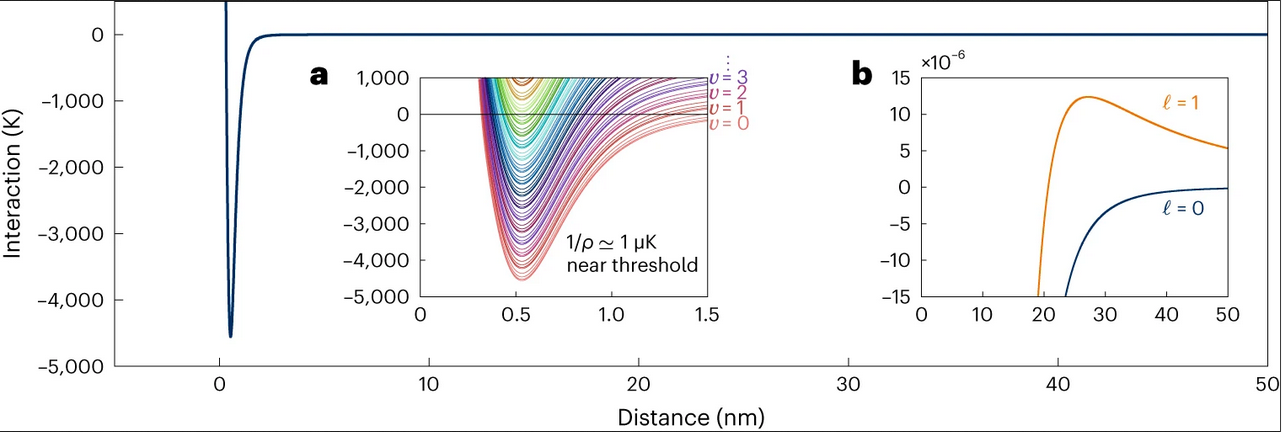Nature Physics: Ultracold Chemistry as a Testbed for Few-body Physics
Dr. Jesus Pérez-Ríos and collaborators have recently published a new review article
in Nature Physics! With it, they seek to give insight into how cold systems with only a few particles
can serve as a unique tool to explore chemistry in these environments!
The potential of these systems span a broad range of interesting applications, from quantum computing to highly detailed study of chemical reactions. For example, ultracold studies provide access to behaviors at a quantum mechanical level, allowing researchers the ability to carefully prepare the molecules to control their chemical behaviors and reactivities! With temperatures as low as a few microkelvin (less than -400 °F), these molecules are incredibly cold. However, the interactions that they participate in can have energies thousands of times larger than that!

A diagram depicting the relevant energy scales and distances for these ultracold interactions.
a) A zoomed in view of the peak, showing how close the various rotational and vibrational
energy states are separated. b) Energy interactions on a longer distance scale, showing
that the overall large-scale interactions have behaviors more aligned with the small
scale energy differences, as opposed to the short-scale strong interactions.
It turns out, however, that the interplay between these long-range and short-range interaction scales is important -- so much so that controlling the strength of the long-range interactions allows scientists to control how these molecules will collide! At the temperatures scientists would typically study these systems, the study of these collisions mostly gives insight into final product molecules after the collision. But at these temperatures, and with the fine-tuning they allow, scientists can study intermediate steps along the reaction in greater detail.
The published article may be found here.

